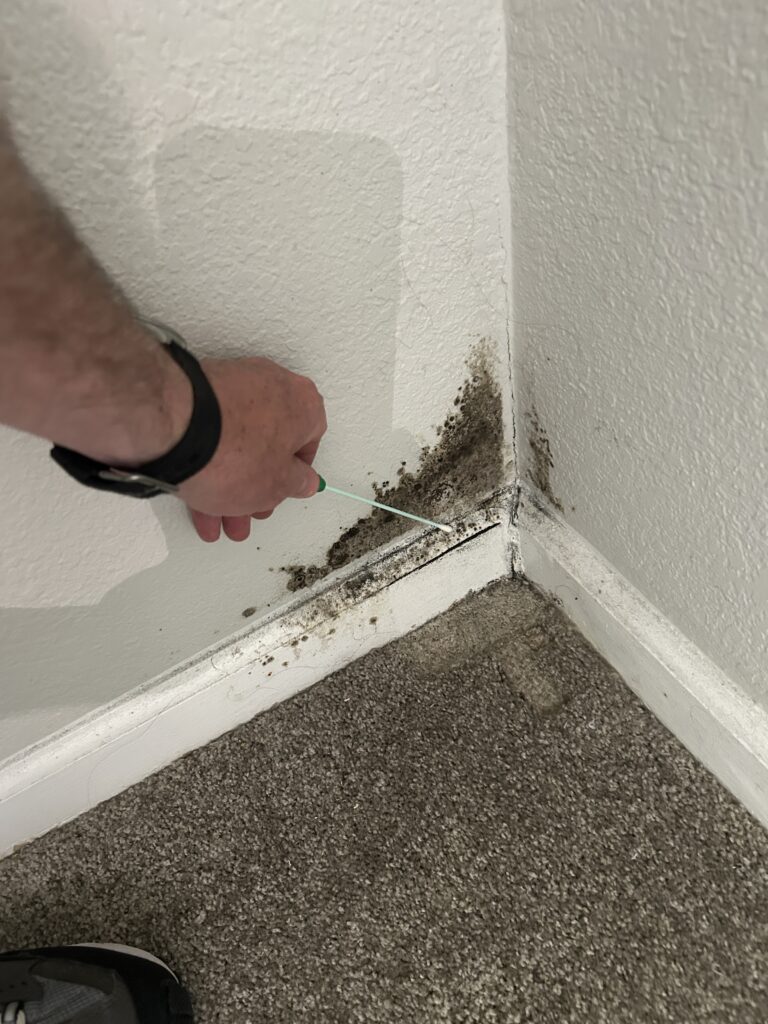Air Sampling vs. Surface Testing: Choosing the Right Method for Your Property
When to Use Air Sampling for Mold Detection
Air sampling measures mold spore concentrations in your indoor environment and compares them to outdoor baseline levels. This method is ideal when you suspect mold but can’t see visible growth, when occupants experience unexplained respiratory symptoms, or when you need to assess overall air quality after remediation. Air sampling captures spores that may be circulating from hidden sources like inside walls, above ceiling tiles, or in ductwork. It’s particularly valuable in Colorado homes where dry conditions can cause mold to release spores without obvious surface growth.
Surface Testing: Direct Evidence of Mold Growth
Surface testing involves collecting samples directly from suspected mold growth or stained areas using tape lifts, swabs, or bulk samples. This method provides definitive identification of mold species and determines whether discoloration is actually mold or just dirt and staining. Surface testing is essential when you see visible growth, need to identify specific mold types for health concerns, or want to confirm that cleaning efforts successfully removed mold from surfaces. In real estate transactions, surface testing provides concrete evidence that can influence negotiations and remediation requirements.

Combining Methods for Comprehensive Assessment
The most thorough mold assessments often use both air and surface sampling to get a complete picture. Air sampling reveals hidden problems and overall contamination levels, while surface testing confirms visible growth and identifies specific species. This combined approach is especially important in Denver-area homes where low humidity can create deceptive conditions – surfaces may appear clean while spores circulate in the air, or visible staining may not actually be mold growth. Professional mold inspectors typically recommend both methods when health symptoms are present or during pre-purchase property evaluations.
Cost Considerations and Practical Applications
Surface testing is generally less expensive and provides faster results, making it suitable for straightforward situations with visible growth. Air sampling costs more due to laboratory analysis requirements but provides broader coverage of your indoor environment. Consider your specific situation: surface testing for obvious problems and confirmation of cleaning success, air sampling for hidden concerns and post-remediation verification. In Colorado’s unique climate, many homeowners benefit from baseline air sampling to understand normal spore levels in their dry environment.
Making the Right Choice for Your Situation
Choose surface testing when you see discoloration or growth and need species identification, or when confirming successful cleanup efforts. Opt for air sampling when experiencing unexplained health symptoms, suspecting hidden mold sources, or conducting post-remediation verification. For real estate transactions, insurance claims, or comprehensive health assessments, consider both methods to ensure nothing is missed. A qualified mold professional can help determine the most cost-effective approach based on your specific concerns, property conditions, and goals for testing.
